Abstract
Attempts to eliminate Salmonella and Arizona infection from newly hatched turtles were made by dipping fresh eggs in cold solutions of Terramycin and Chloromycetin at 1,000, 1,200, 1,500 and 2,000 μg per ml for either 10, 20, or 30 min. Control groups consisted of hatchlings produced from nondipped eggs or eggs dipped in chilled water. In two of the four experiments 5 to 10 eggs were blended on days 15, 30, and 45 post antibiotic dip treatment. Twenty-five to 60 hatchlings from each control or experimental dip group were held in containers and the water was tested (excretion method) for Salmonella and Arizona every 15 or 30 days for 180 to 210 days after hatching. Representative turtles were homogenized (blending method) to determine if systemic infections were present. All specimens tested were enriched in tetrathionate and selenite cystine broth. Nondipped eggs and water-dipped eggs routinely showed Salmonella and Arizona present in egg homogenate and hatchlings emerging from these eggs excreted these pathogens. Terramycin- and Chloromycetin-dipped eggs were uniformly negative for these pathogens, only if fresh eggs were dipped. Bacteriological assay of container water and whole turtle homogenate from hatchlings were negative for Salmonella and Arizona if eggs were dipped in 1,000 μg of Terramycin early in the egg laying season or if eggs were dipped in 1,500 or 2,000 μg of Terramycin per ml late in the egg laying season. The results of temperature-differential egg dip studies suggest that this is a feasible and promising method by which to eradicate Salmonella and Arizona from the turtle.
Full text
PDF
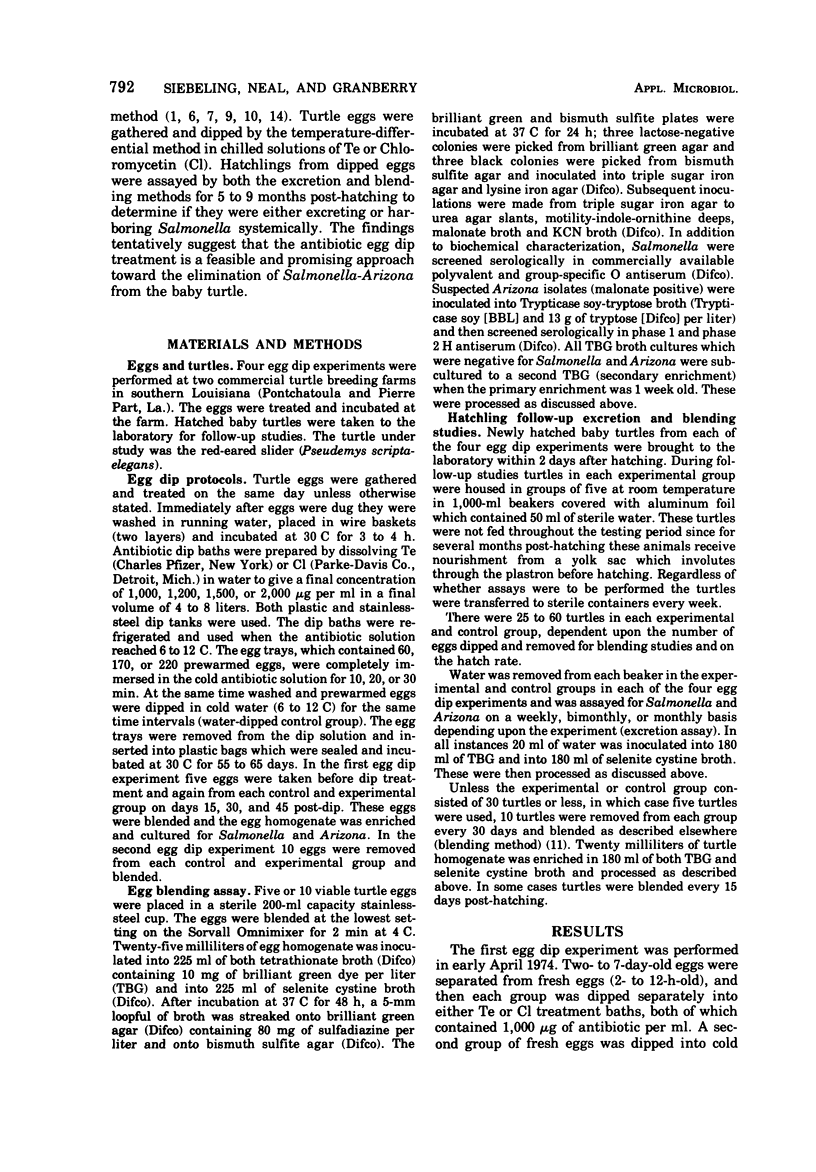
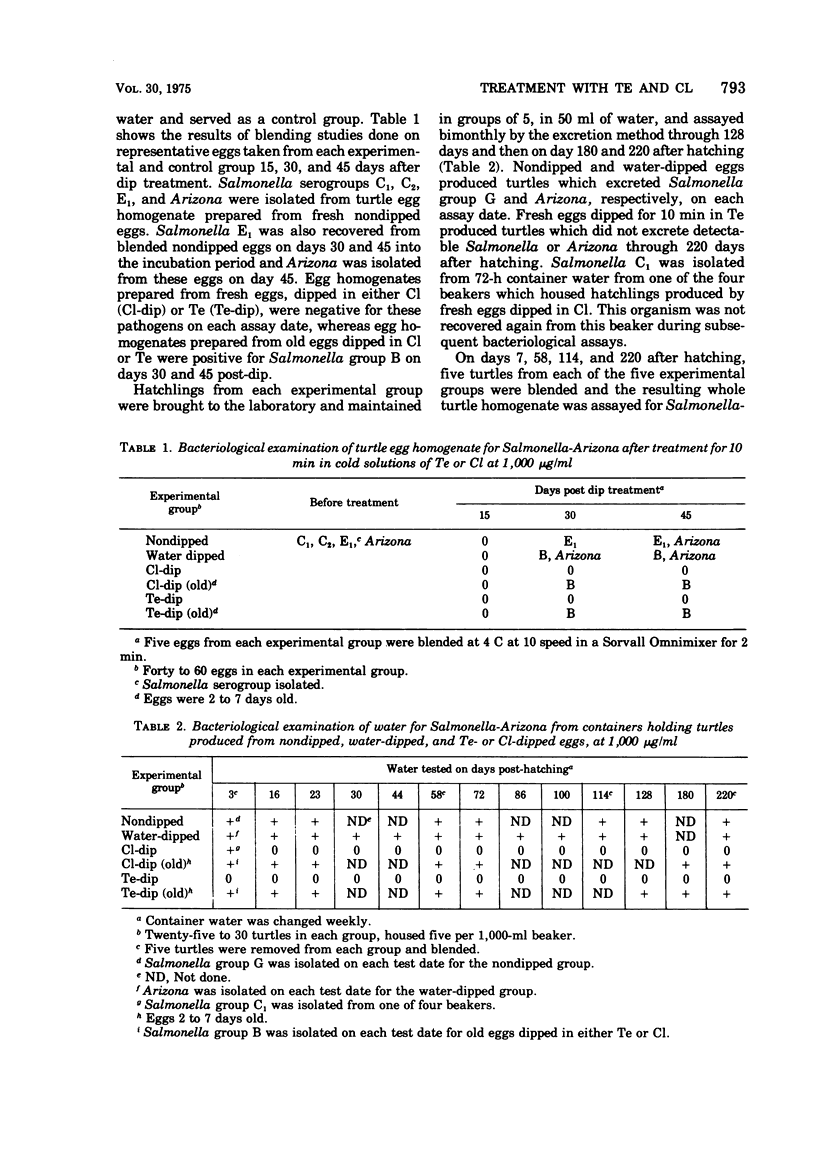
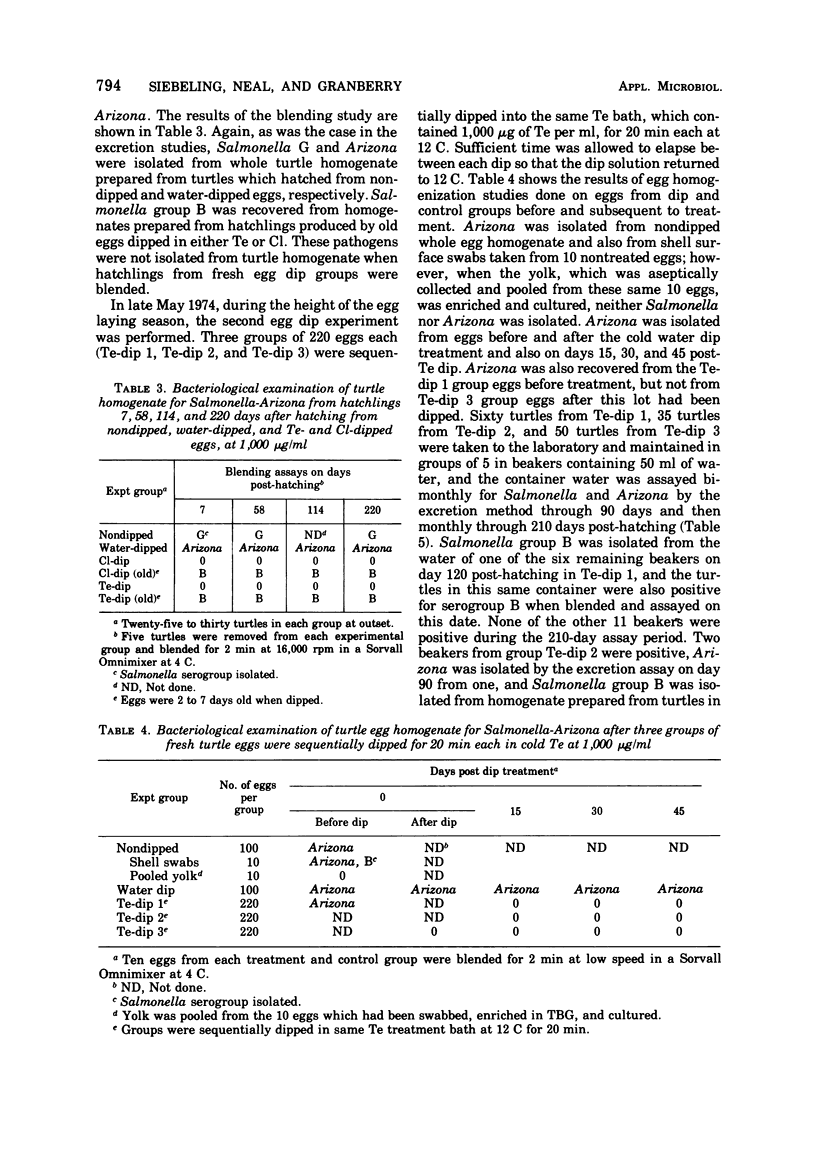
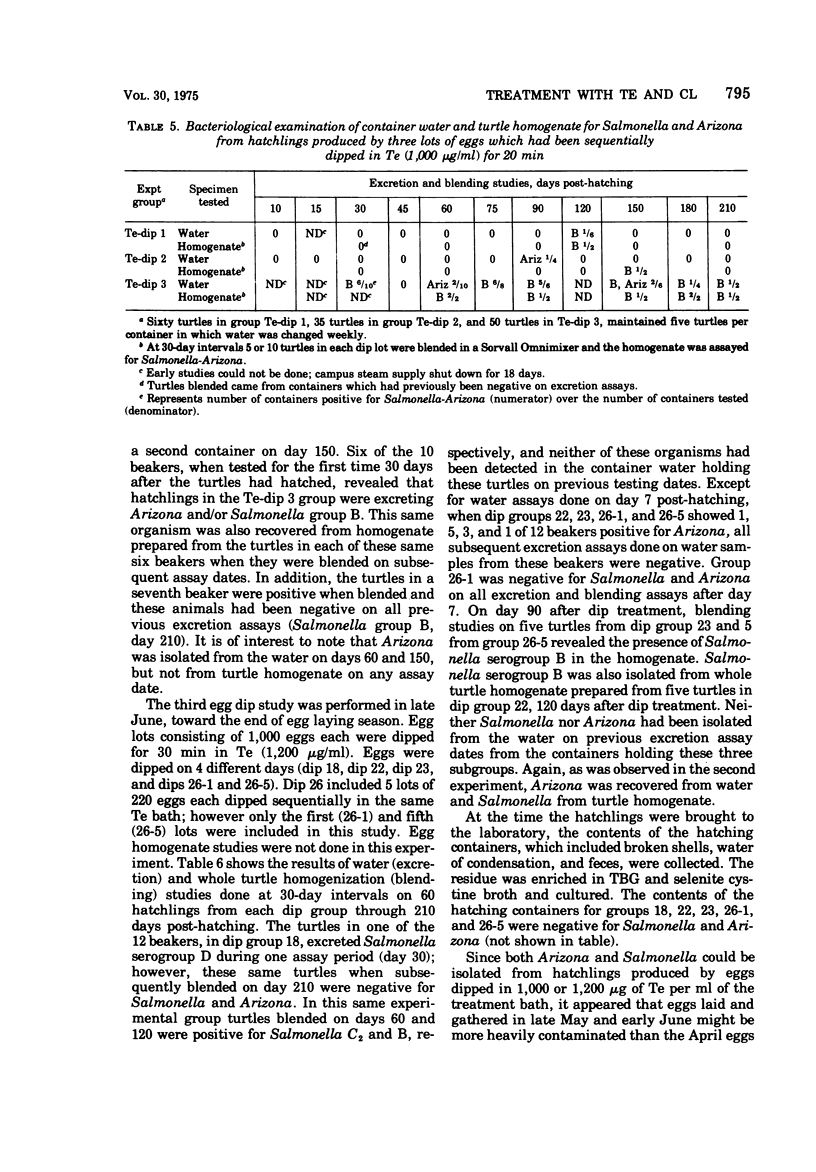
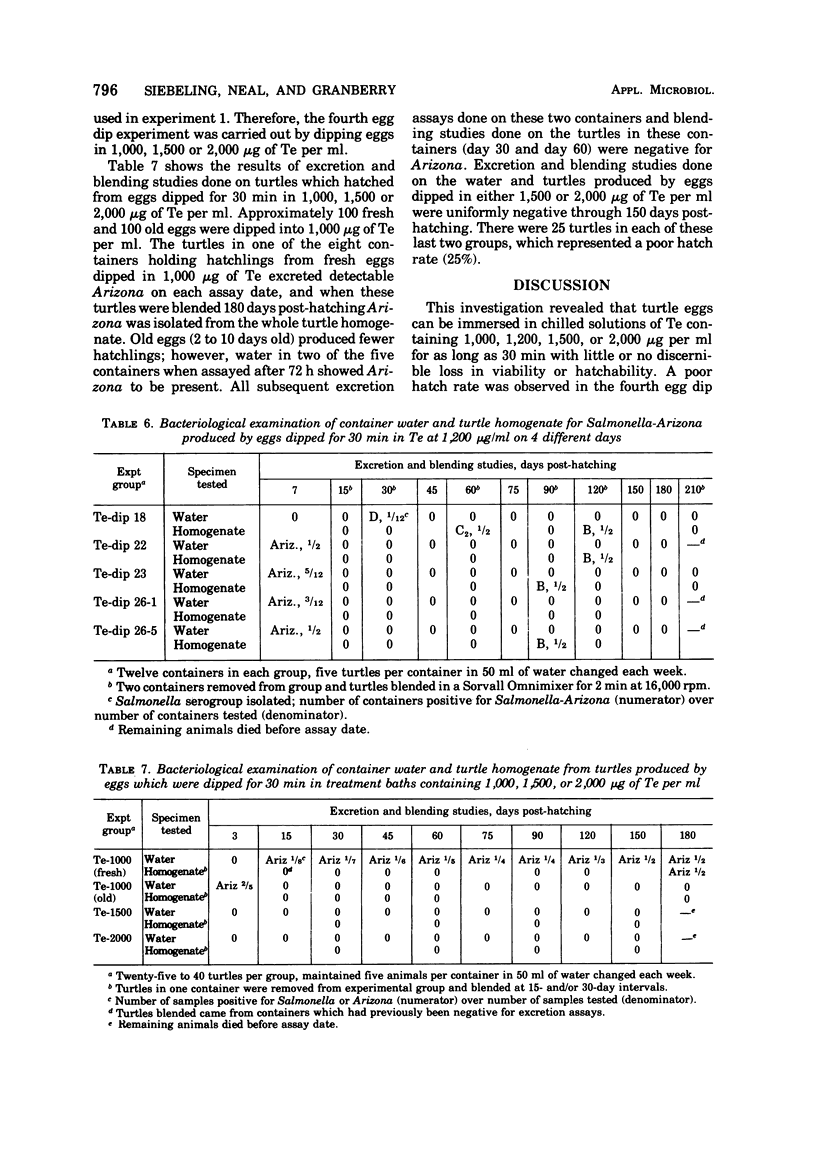
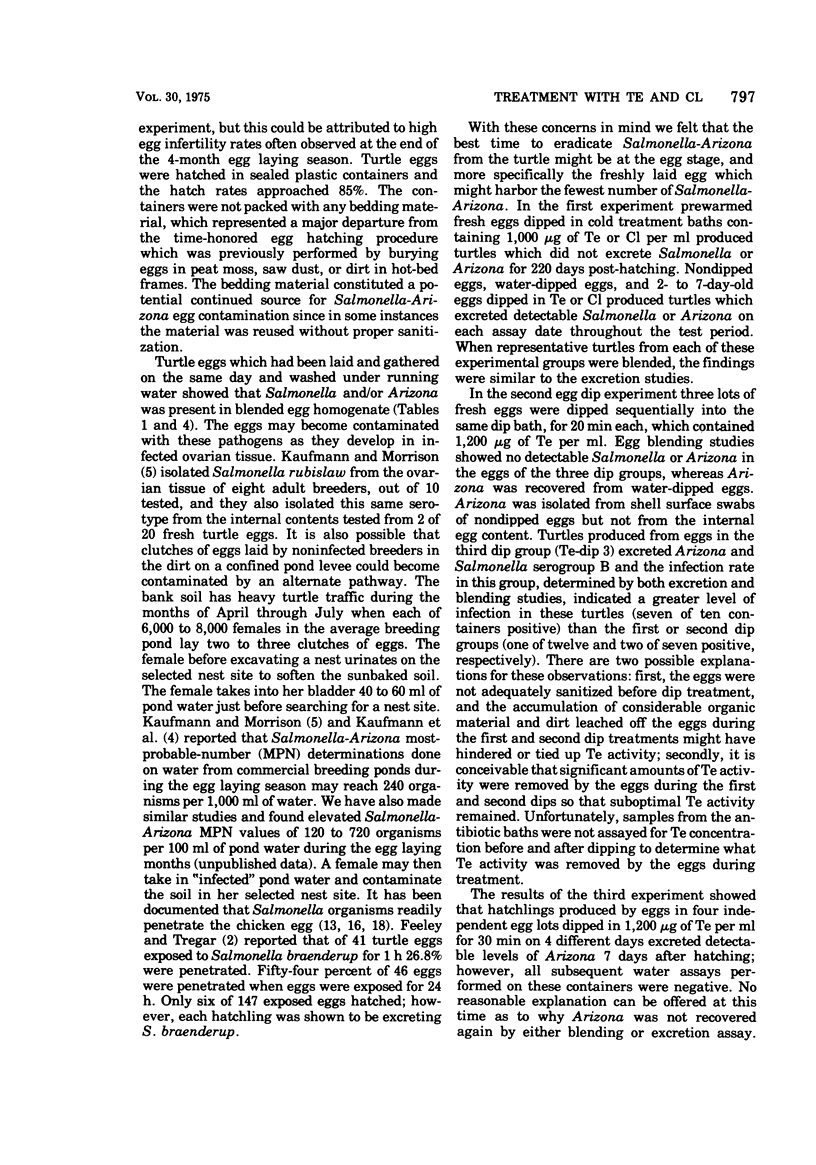

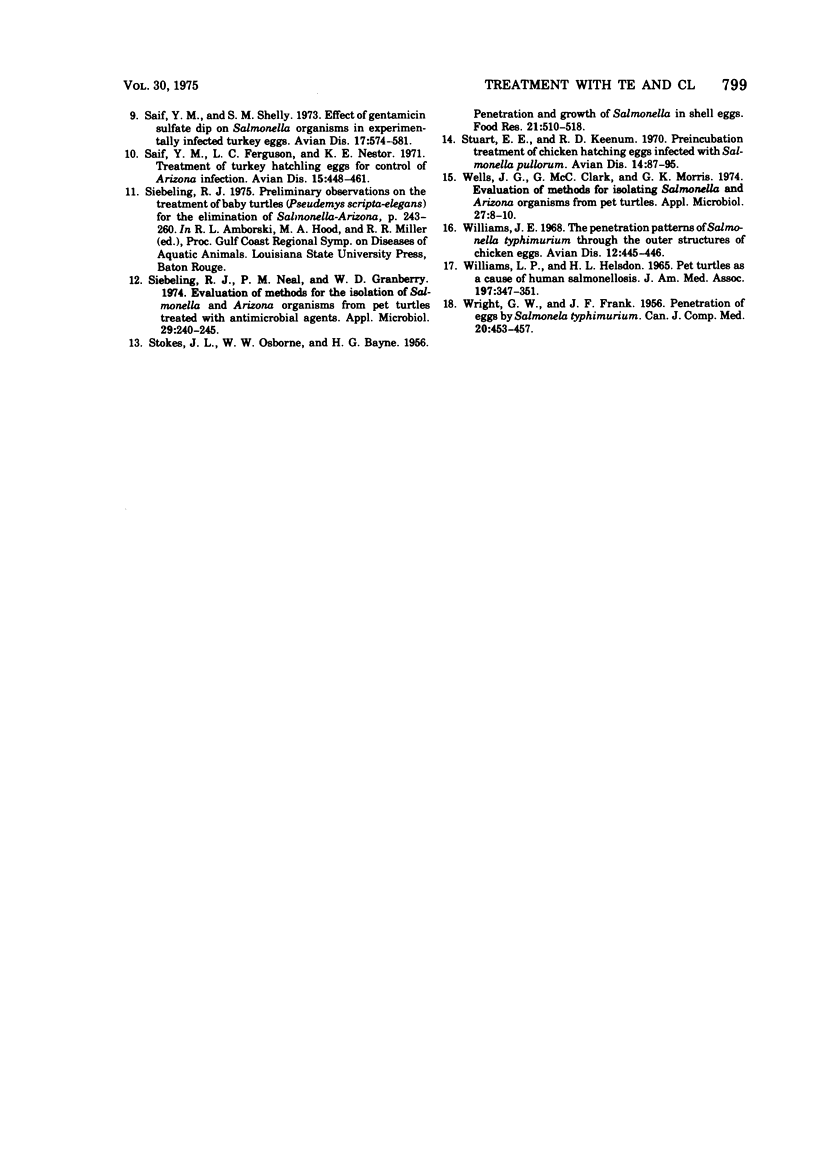
Selected References
These references are in PubMed. This may not be the complete list of references from this article.
- Barnes L. E., Loy J. I., Bickford S. M. Gentamicin levels in chicken eggs and tissues of progeny following temperature-differential dipping. Avian Dis. 1973 Jul-Sep;17(3):594–597. [PubMed] [Google Scholar]
- Feeley J. C., Treger M. D. Penetration of turtle eggs by Salmonella braenderup. Public Health Rep. 1969 Feb;84(2):156–158. [PMC free article] [PubMed] [Google Scholar]
- Kaufmann A. F., Fox M. D., Morris G. K., Wood B. T., Feeley J. C., Frix M. K. Turtle-associated salmonellosis. 3. The effects of environmental salmonellae in commercial turtle breeding ponds. Am J Epidemiol. 1972 Jun;95(6):521–528. doi: 10.1093/oxfordjournals.aje.a121420. [DOI] [PubMed] [Google Scholar]
- Kaufmann A. F., Morrison Z. L. An epidemiologic study of salmonellosis in turtles. Am J Epidemiol. 1966 Sep;84(2):364–370. doi: 10.1093/oxfordjournals.aje.a120649. [DOI] [PubMed] [Google Scholar]
- Lucas T. E., Kumar M. C., Kleven S. H., Pomeroy B. S. Antibiotic treatment of turkey hatching eggs preinfected with Salmonellae. Avian Dis. 1970 Aug;14(3):455–462. [PubMed] [Google Scholar]
- ROSENSTEIN B. J., RUSSO P., HINCHLIFFE M. C. A FAMILY OUTBREAK OF SALMONELLOSIS TRACED TO A PET TURTLE. N Engl J Med. 1965 May 6;272:960–961. doi: 10.1056/NEJM196505062721807. [DOI] [PubMed] [Google Scholar]
- Saif Y. M., Ferguson L. C., Nestor K. E. Treatment of turkey hatching eggs for control of Arizona infection. Avian Dis. 1971 Jul-Sep;15(3):448–461. [PubMed] [Google Scholar]
- Saif Y. M., Shelly S. M. Effect of gentamicin sulfate dip on salmonella organisms in experimentally infected turkey eggs. Avian Dis. 1973 Jul-Sep;17(3):574–581. [PubMed] [Google Scholar]
- Siebeling R. J., Neal P. M., Granberry W. D. Evaluation of methods for the isolation of Salmonella and Arizona organisms from pet turtles treated with antimicrobial agents. Appl Microbiol. 1975 Feb;29(2):240–245. doi: 10.1128/am.29.2.240-245.1975. [DOI] [PMC free article] [PubMed] [Google Scholar]
- Stuart E. E., Keenum R. D. Preincubation treatment of chicken hatching eggs infected with Salmonella pullorum. Avian Dis. 1970 Feb;14(1):87–95. [PubMed] [Google Scholar]
- WILLIAMS L. P., Jr, HELSDON H. L. PET TURTLES AS A CAUSE OF HUMAN SALMONELLOSIS. JAMA. 1965 May 3;192:347–351. doi: 10.1001/jama.1965.03080180005001. [DOI] [PubMed] [Google Scholar]
- Wells J. G., Clark G. M., Morris G. K. Evaluation of methods for isolating Salmonella and Arizona organisms from pet turtles. Appl Microbiol. 1974 Jan;27(1):8–10. doi: 10.1128/am.27.1.8-10.1974. [DOI] [PMC free article] [PubMed] [Google Scholar]
- Williams J. E., Dillard L. H., Hall G. O. The penetration patterns of Salmonella typhimurium through the outer structures of chicken eggs. Avian Dis. 1968 Aug;12(3):445–466. [PubMed] [Google Scholar]
- Wright G. W., Frank J. F. Penetration of Eggs by Salmonella Typhi-Murium. Can J Comp Med Vet Sci. 1956 Dec;20(12):453–457. [PMC free article] [PubMed] [Google Scholar]


